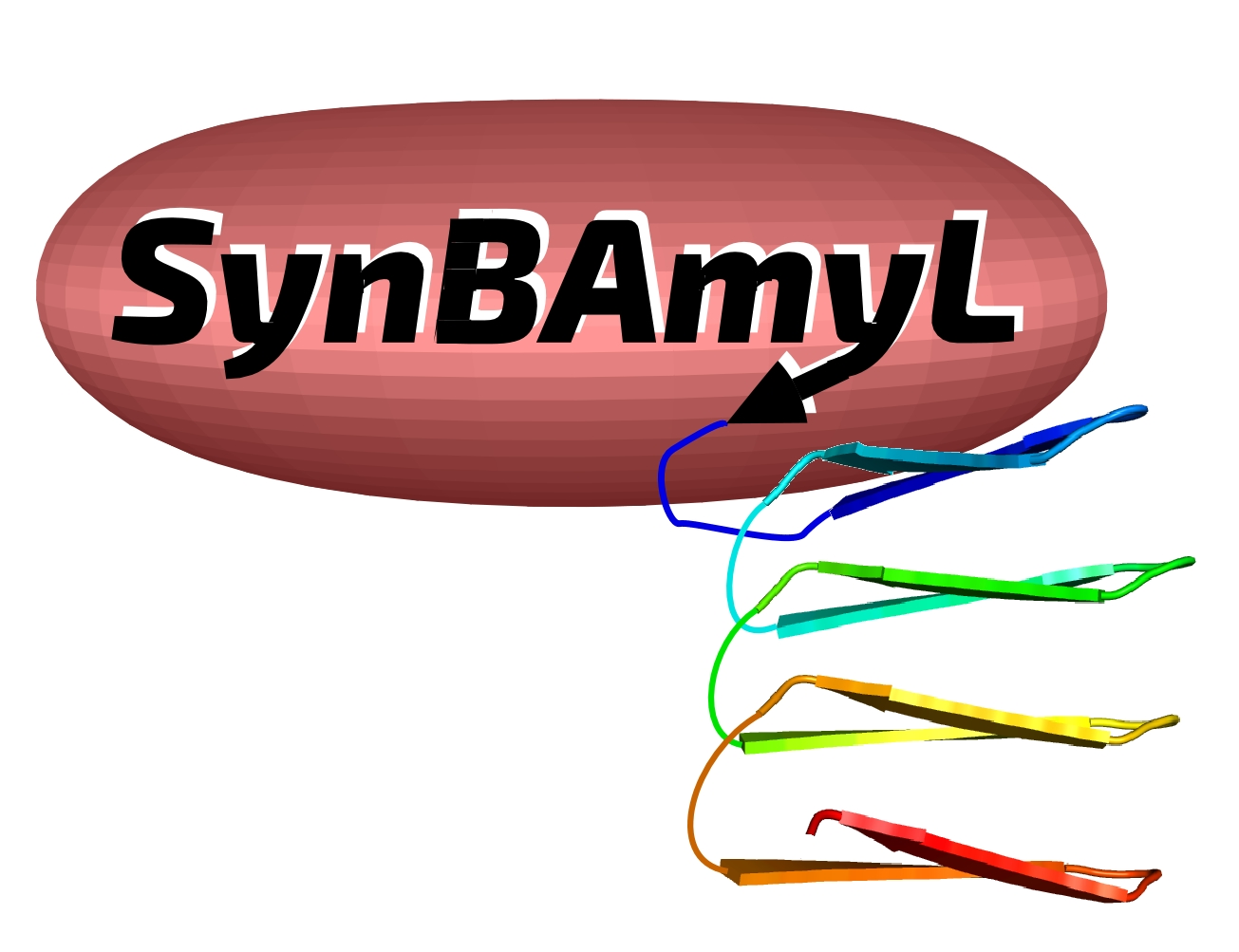Synthetic Bacterial Amyloids
RESEARCH GROUPS

Rafael Giraldo
Group Leader
Research Summary
Amyloids are ordered β-sheet assemblies that determine the loss-of-function of their constituent protein, enabling the prion-like epigenetic inheritance of the resulting phenotype. However, when amyloids are the outcome of protein misfolding they often gain an undesirable function: triggering neurodegenerative or systemic diseases. We create, through Synthetic Biology, bio-resources based on bacterial amyloids with two major aims: i) understanding the molecular determinants of the shift between function and toxicity in prions; and ii) from a One Health perspective, to empower microbiota with devices for the clearance of amyloids and prions present in natural environments, such as soils or the gut.

Research Lines
Rep proteins are essential for the maintenance of plasmids in Gram-negative bacteria. Their WH1 domain undergoes conformational changes capacitating Rep either as transcriptional repressors, as DNA replication initiators or, through the assembly of amyloid oligomers, as inhibitors of premature re-replication rounds. Stable WH1 dimers of the Pseudomonas pPS10 plasmid RepA protein become metastable amyloidogenic monomers upon allosteric binding of either plasmid-specific dsDNA sequences or acidic phospholipids. Engineered fusions of mutant variants of RepA-WH1 to the fluorescent protein mCherry, generate a prion-like protein (aka prionoid) that is epigenetically transmitted from mother-to-daughter Escherichia coli cells under the modulation of the Hsp70 chaperone DnaK, causing to bacteria a synthetic ‘generic’ amyloid proteinopathy. In the bacterial cytosol, RepA-WH1 aggregates as distinct strains, either dense foci or fluidized particles, which exhibit acute and mild cytotoxicity, respectively. RepA-WH1 amyloidosis recapitulates in bacteria the mitochondrial route in human amyloid diseases, including the formation of oligomeric pores at the internal membrane, the generation of reactive oxygen species and the co-aggregation of stress-responsive factors. RepA-WH1 can be horizontally transmitted to mammalian cultured cells, but its cytotoxicity depends on its heterologous expression in the recipient cells (Fig. 1A). We are currently exploring the potential of amyloidogenic Rep-WH1 proteins in the control of prevalent bacterial phytopathogens.
We have used RepA-WH1 as a benchmark for the design of synthetic tools to probe protein amyloidogenesis, including gold nanoparticles-based sensors and screening devices exploiting amyloid-promoted overriding of translation termination, both in yeast and in bacteria. Control on RepA-WH1 amyloidogenesis was also achieved through optogenetics, i.e., the fusion of a blue light-responsive plant domain (LOV2) to WH1. Under illumination, a LOV2-WH1-mCherry fusion assembles as oligomers that are cytotoxic in E. coli, hampering bacterial growth, while in the darkness it forms inert amyloid fibrils and hydrogels. These novel ‘optobiotics’ might constitute new tools to overcome the threat of resistance to antimicrobials (Fig. 1B).
Engineering the E. coli outer membrane porin OmpF by grafting an amyloidogenic sequence in an extracellular loop enticed to the bacterial envelope, through the assembly of amyloids, the same sequence when presented as a free peptide or within its protein of origin. To immobilize amyloids on bacteria opens a way to the bioremediation of prions persistent in natural environments (Fig. 1C).

RepA-WH1, a bacterial plasmid replication protein assembling as a functional amyloid, can be engineered either as a minimal model of prion disease (A), or to trigger amyloid toxicity upon illumination, thus generating an antimicrobial agent (B). Bacterial outer membrane porins as OmpF can be converted into scavengers of amyloid peptides and proteins for environmental and biomedical applications (C).
Publications
Group Members
Group Leader
Rafael Giraldo
Lab assistant
Silvia Marín-Vázquez
PhD candidates
Leticia Lucero-López
María Luz Blasco-Santamaría



